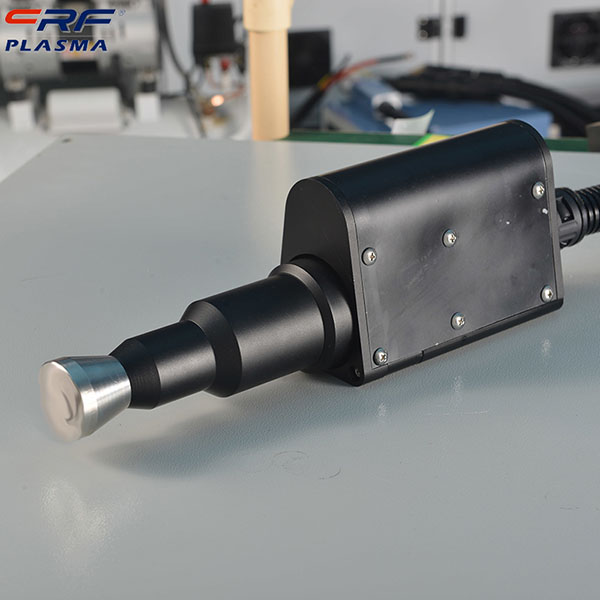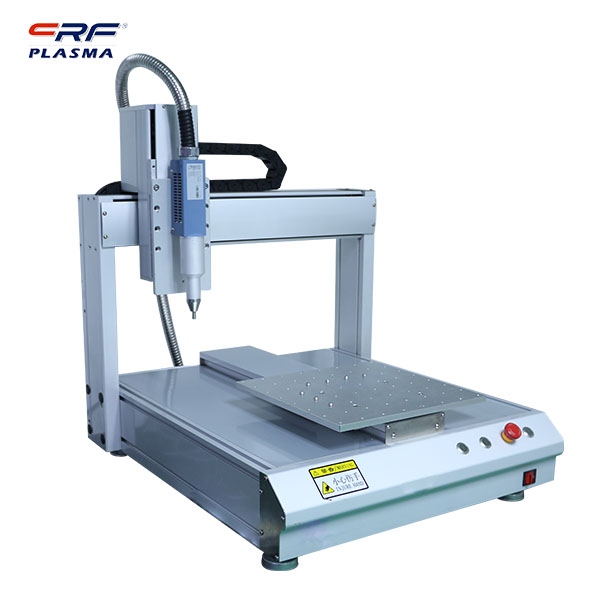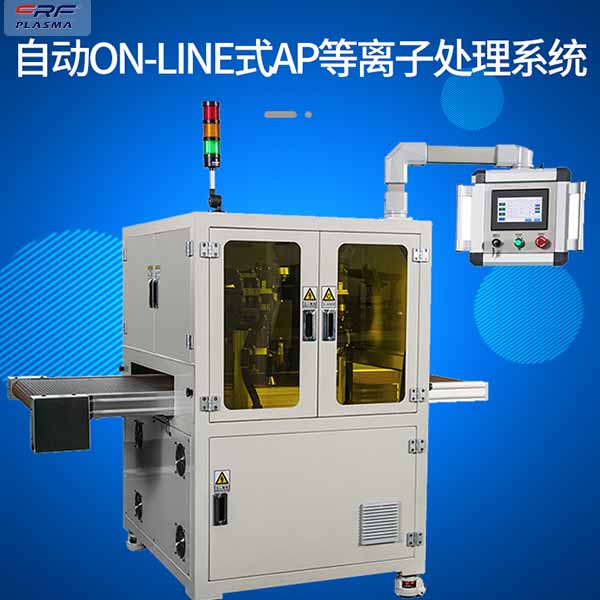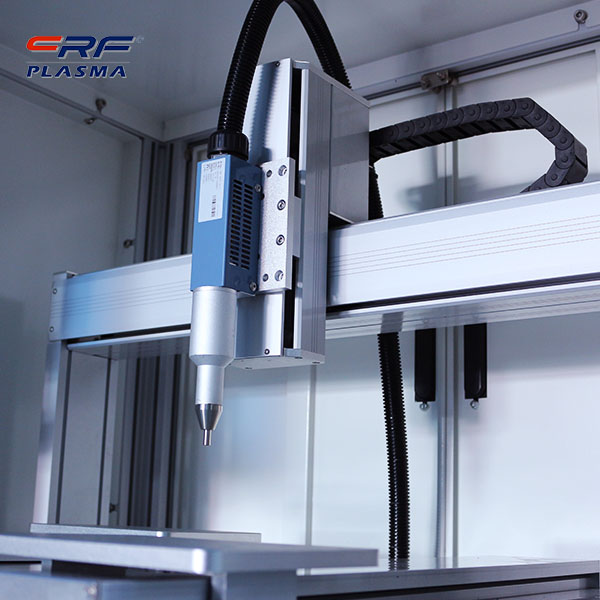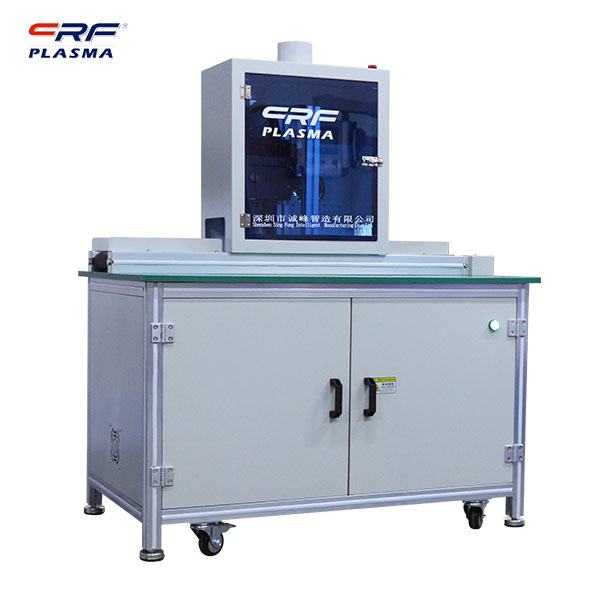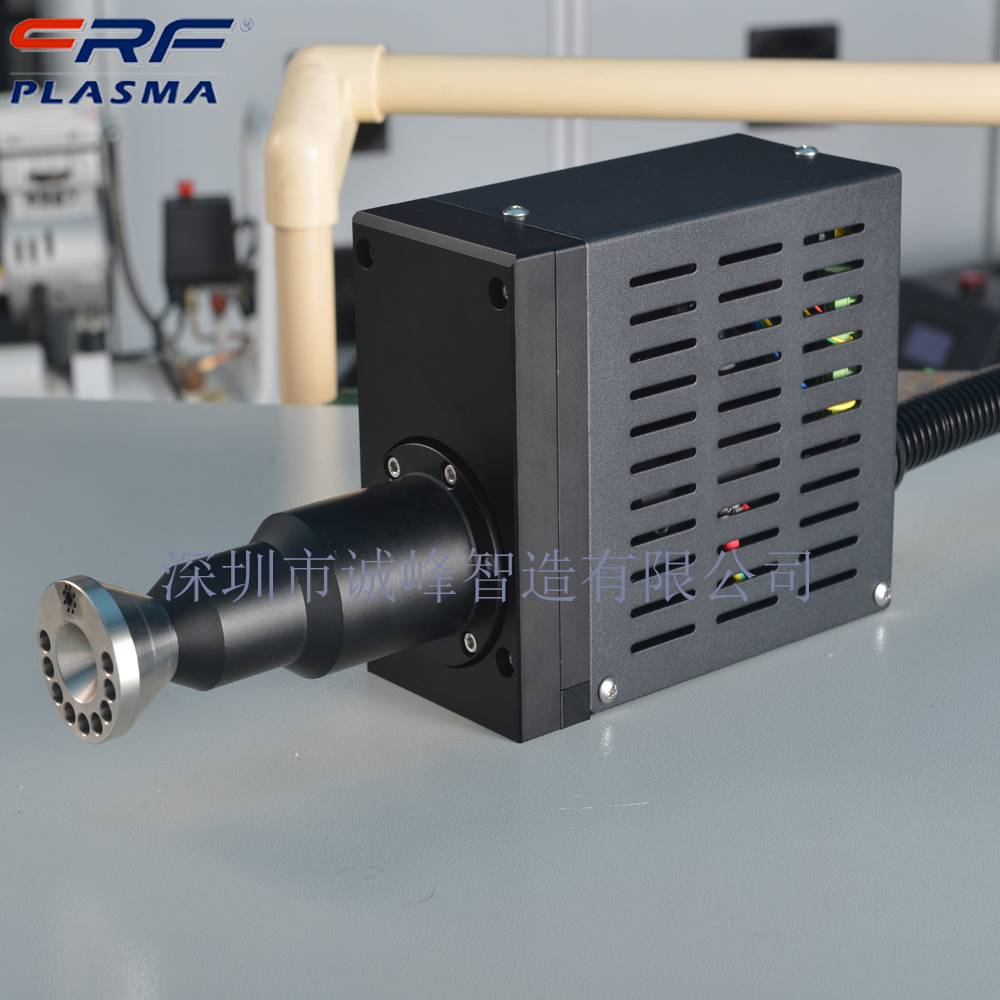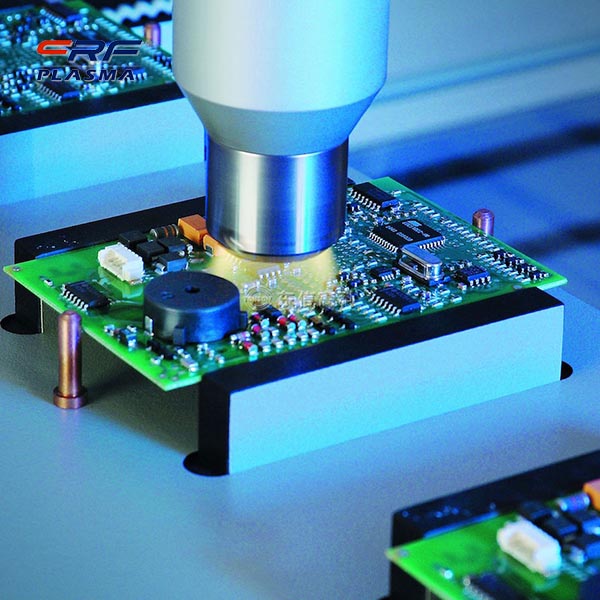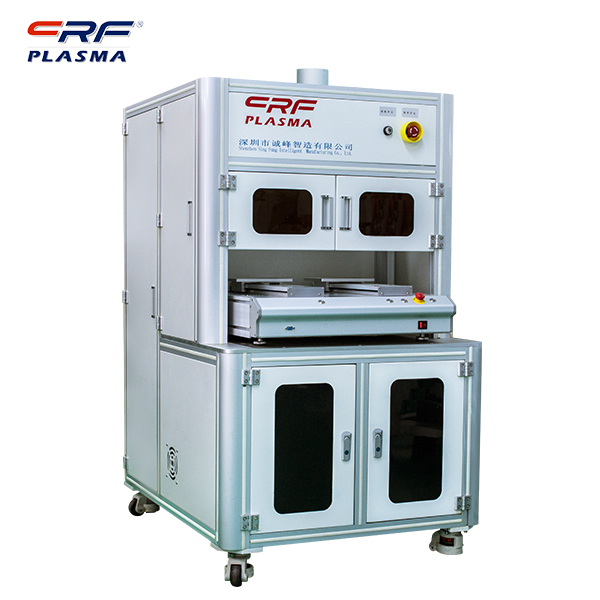
Welcome to Shenzhen Sing Fung Intelligent Manufacturing Co., Ltd.
E-mail:shaobo@sfi-crf.com
Plasma polymerization analysis of heat-sensitive polymer coating with low temperature plasma treatment technology
- Categories:Technical Support
- Author:Plasma cleaning machine-CRF plasma plasma equipment-plasma surface treatment machine manufacturer-chengfeng intelligent manufacturing
- Origin:
- Time of issue:2022-02-16
- Views:
(Summary description)Plasma polymerization analysis of heat-sensitive polymer coating with low temperature plasma treatment technology: Plasma technology is more and more widely used in production, life and other fields. The surface modification of plasma materials is relatively convenient, clean, free from environmental interference, and has no restrictions on the types of materials. In plasma polymerization, N-isopropylacrylphthalamide monomer is carried, and enters into the reaction area to prepare N-isopropylacrylamide polymer on the surface of glass slide and polystyrene. Low temperature plasma mainly refers to a partially ionized gas generated by high temperature or gas discharge in industrial equipment or laboratories, which interacts with other substances. The plasma is mainly obtained by the gas discharge generated by the AC or DC power supply, and has a certain stability. The low temperature plasma is mostly generated in the form of gas discharge. In terms of the design of the plasma polymerization device, in order to promote the surface of the base material to obtain the N-isopropylacrylamide polymerized film, a solution bottle containing N-isopropylacrylamide was placed between the reaction chamber and the Ar gas cylinder. Monomer plasma polymerization can be achieved in a vacuum environment. At room temperature, N-isopropyl acrylphthalamide is white crystal, soluble in water, and the functional film produced has high temperature sensitivity, has a controlling effect on gel permeation chromatography and liquid chromatography packing, and can be used as temperature thickening agent, wound patch, resistive ink, anti-stain, etc. Poly-N-isopropylacrylophthalamide is a kind of heat-sensitive polymer material with good physiological compatibility and remarkable phase separation properties. It is widely used in substance separation and purification, drug controlled release and so on. Based on the atmospheric pressure environment, N-isopropyl acrylamide can be polymerized through dielectric barrier discharge, and the film is mainly obtained from the surface of the glass slide and polystyrene. During the polymerization process, a solution bottle containing N-isopropylpropene can be placed between the discharge area and the Ar gas bottle. When the gas in the Ar gas bottle is completely released, the solution is invaded through a long conduit (solution bottle), and then exported through a short conduit, and then N-isopropyl acrylic amine monomer is placed in the discharge area. The longer the polymerization time is, the thicker the film becomes, and the contact angle tends to increase, which is mostly due to the use of hydrophilic materials, which leads to an increase in the permeability of water droplets on its surface. In addition, nitrogen elements were introduced into the surface of the glass slide after polymerization treatment, and the components contained N-isopropylacrylamide monomer and polymer. The N-isopropyl acrylamide polymer film was obtained by plasma polymerization, and the thermal sensitivity of the polymer film was measured with the help of a temperature control device and a contact angle meter, which fully proved the spatial existence of poly-N-isopropyl acrylamide. The low-temperature plasma material processing technology has been fully applied in the fields of production and life, and it is believed that it will have a wider application space in other fields.
Plasma polymerization analysis of heat-sensitive polymer coating with low temperature plasma treatment technology
(Summary description)Plasma polymerization analysis of heat-sensitive polymer coating with low temperature plasma treatment technology:
Plasma technology is more and more widely used in production, life and other fields. The surface modification of plasma materials is relatively convenient, clean, free from environmental interference, and has no restrictions on the types of materials. In plasma polymerization, N-isopropylacrylphthalamide monomer is carried, and enters into the reaction area to prepare N-isopropylacrylamide polymer on the surface of glass slide and polystyrene.
Low temperature plasma mainly refers to a partially ionized gas generated by high temperature or gas discharge in industrial equipment or laboratories, which interacts with other substances. The plasma is mainly obtained by the gas discharge generated by the AC or DC power supply, and has a certain stability. The low temperature plasma is mostly generated in the form of gas discharge. In terms of the design of the plasma polymerization device, in order to promote the surface of the base material to obtain the N-isopropylacrylamide polymerized film, a solution bottle containing N-isopropylacrylamide was placed between the reaction chamber and the Ar gas cylinder. Monomer plasma polymerization can be achieved in a vacuum environment.
At room temperature, N-isopropyl acrylphthalamide is white crystal, soluble in water, and the functional film produced has high temperature sensitivity, has a controlling effect on gel permeation chromatography and liquid chromatography packing, and can be used as temperature thickening agent, wound patch, resistive ink, anti-stain, etc. Poly-N-isopropylacrylophthalamide is a kind of heat-sensitive polymer material with good physiological compatibility and remarkable phase separation properties. It is widely used in substance separation and purification, drug controlled release and so on.
Based on the atmospheric pressure environment, N-isopropyl acrylamide can be polymerized through dielectric barrier discharge, and the film is mainly obtained from the surface of the glass slide and polystyrene. During the polymerization process, a solution bottle containing N-isopropylpropene can be placed between the discharge area and the Ar gas bottle.
When the gas in the Ar gas bottle is completely released, the solution is invaded through a long conduit (solution bottle), and then exported through a short conduit, and then N-isopropyl acrylic amine monomer is placed in the discharge area. The longer the polymerization time is, the thicker the film becomes, and the contact angle tends to increase, which is mostly due to the use of hydrophilic materials, which leads to an increase in the permeability of water droplets on its surface. In addition, nitrogen elements were introduced into the surface of the glass slide after polymerization treatment, and the components contained N-isopropylacrylamide monomer and polymer.
The N-isopropyl acrylamide polymer film was obtained by plasma polymerization, and the thermal sensitivity of the polymer film was measured with the help of a temperature control device and a contact angle meter, which fully proved the spatial existence of poly-N-isopropyl acrylamide. The low-temperature plasma material processing technology has been fully applied in the fields of production and life, and it is believed that it will have a wider application space in other fields.
- Categories:Technical Support
- Author:Plasma cleaning machine-CRF plasma plasma equipment-plasma surface treatment machine manufacturer-chengfeng intelligent manufacturing
- Origin:
- Time of issue:2022-02-16 16:15
- Views:
Plasma polymerization analysis of heat-sensitive polymer coating with low temperature plasma treatment technology:
Plasma technology is more and more widely used in production, life and other fields. The surface modification of plasma materials is relatively convenient, clean, free from environmental interference, and has no restrictions on the types of materials. In plasma polymerization, N-isopropylacrylphthalamide monomer is carried, and enters into the reaction area to prepare N-isopropylacrylamide polymer on the surface of glass slide and polystyrene.
Low temperature plasma mainly refers to a partially ionized gas generated by high temperature or gas discharge in industrial equipment or laboratories, which interacts with other substances. The plasma is mainly obtained by the gas discharge generated by the AC or DC power supply, and has a certain stability. The low temperature plasma is mostly generated in the form of gas discharge. In terms of the design of the plasma polymerization device, in order to promote the surface of the base material to obtain the N-isopropylacrylamide polymerized film, a solution bottle containing N-isopropylacrylamide was placed between the reaction chamber and the Ar gas cylinder. Monomer plasma polymerization can be achieved in a vacuum environment.
At room temperature, N-isopropyl acrylphthalamide is white crystal, soluble in water, and the functional film produced has high temperature sensitivity, has a controlling effect on gel permeation chromatography and liquid chromatography packing, and can be used as temperature thickening agent, wound patch, resistive ink, anti-stain, etc. Poly-N-isopropylacrylophthalamide is a kind of heat-sensitive polymer material with good physiological compatibility and remarkable phase separation properties. It is widely used in substance separation and purification, drug controlled release and so on.
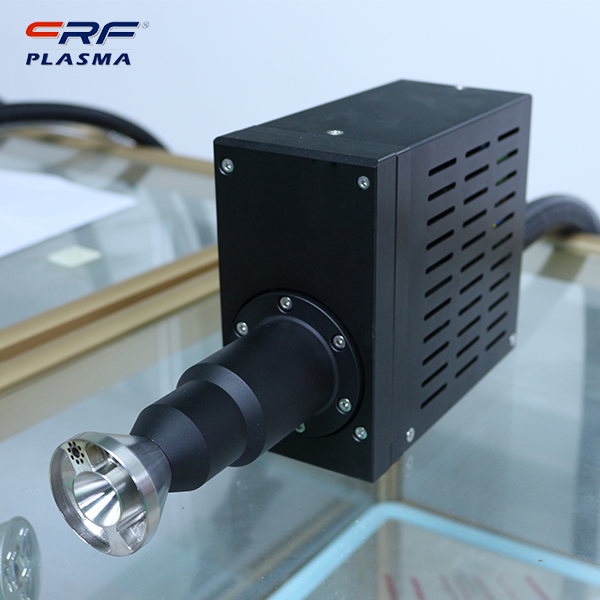 Based on the atmospheric pressure environment, N-isopropyl acrylamide can be polymerized through dielectric barrier discharge, and the film is mainly obtained from the surface of the glass slide and polystyrene. During the polymerization process, a solution bottle containing N-isopropylpropene can be placed between the discharge area and the Ar gas bottle.
Based on the atmospheric pressure environment, N-isopropyl acrylamide can be polymerized through dielectric barrier discharge, and the film is mainly obtained from the surface of the glass slide and polystyrene. During the polymerization process, a solution bottle containing N-isopropylpropene can be placed between the discharge area and the Ar gas bottle.
When the gas in the Ar gas bottle is completely released, the solution is invaded through a long conduit (solution bottle), and then exported through a short conduit, and then N-isopropyl acrylic amine monomer is placed in the discharge area. The longer the polymerization time is, the thicker the film becomes, and the contact angle tends to increase, which is mostly due to the use of hydrophilic materials, which leads to an increase in the permeability of water droplets on its surface. In addition, nitrogen elements were introduced into the surface of the glass slide after polymerization treatment, and the components contained N-isopropylacrylamide monomer and polymer.
The N-isopropyl acrylamide polymer film was obtained by plasma polymerization, and the thermal sensitivity of the polymer film was measured with the help of a temperature control device and a contact angle meter, which fully proved the spatial existence of poly-N-isopropyl acrylamide. The low-temperature plasma material processing technology has been fully applied in the fields of production and life, and it is believed that it will have a wider application space in other fields.
Scan the QR code to read on your phone

TEL:0755-3367 3020 / 0755-3367 3019

E-mail:sales-sfi@sfi-crf.com

ADD:Mabao Industrial Zone, Huangpu, Baoan District, Shenzhen





